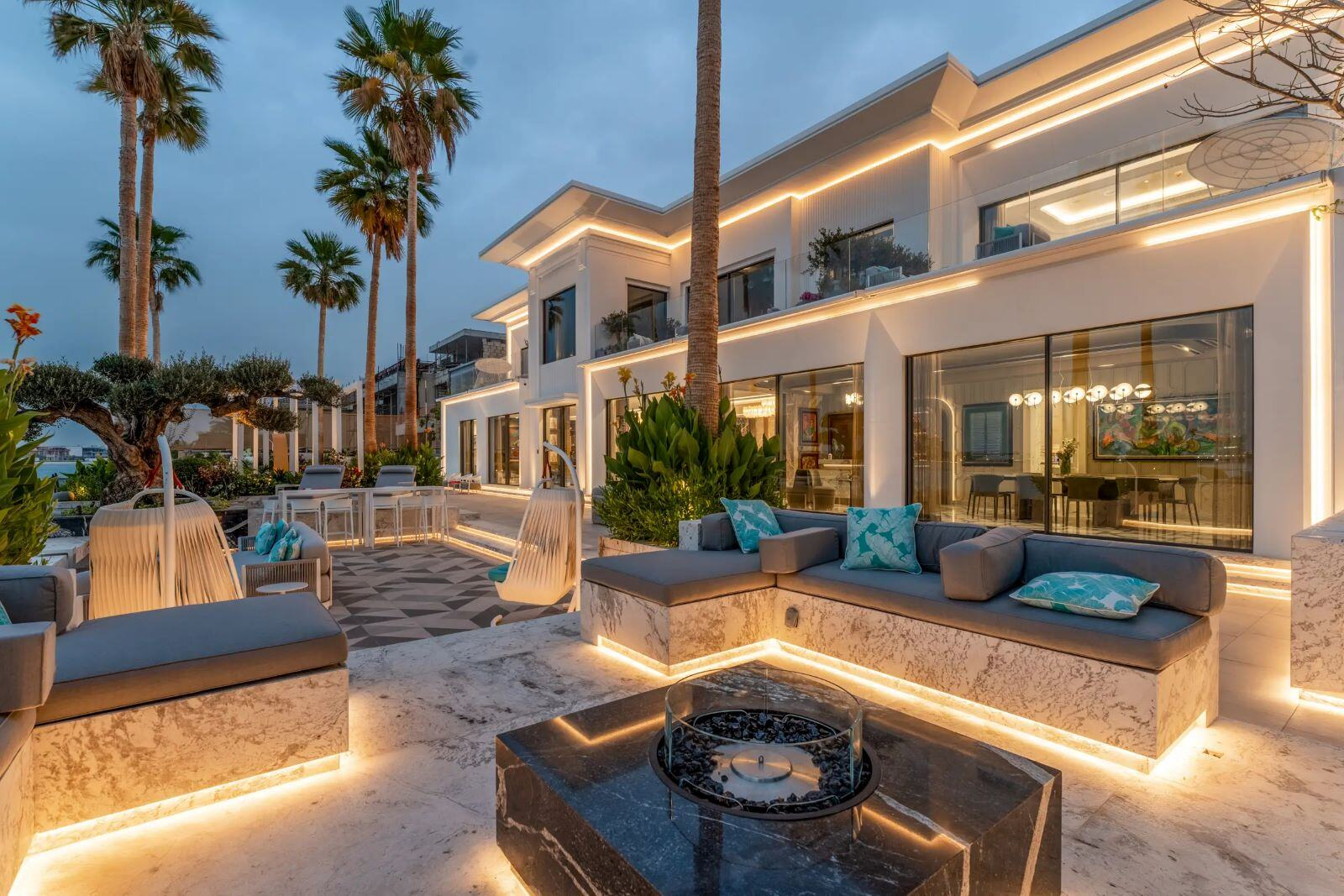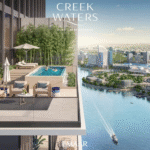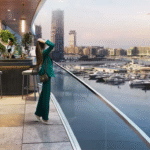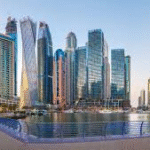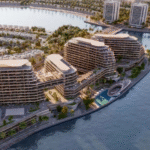Now Reading: Dubai Property Market Guide: Best Investment Areas for 2025 and Beyond
-
01
Dubai Property Market Guide: Best Investment Areas for 2025 and Beyond
Dubai Property Market Guide: Best Investment Areas for 2025 and Beyond
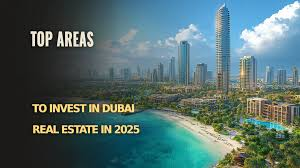
Table of Contents
Imagine owning a home in Dubai, where your investment grows steadily, and you’re part of a city that’s shaping the future with every skyline. In 2025, Dubai’s real estate market is thriving, with 96,000 transactions worth $87 billion in the first half, 58% driven by buyers from the UK, India, Russia, and China. Top investment areas Palm Jumeirah, Dubai Marina, Jumeirah Village Circle (JVC), Dubai Hills Estate, and Dubai South offer 100% freehold ownership, a dirham pegged to the U.S. dollar, and no personal income tax, capital gains tax, or annual property taxes.
Delivering 6-10% rental yields and 6-15% price appreciation, they outshine London (2-4%) and New York (2-3%). Properties over $545,000 qualify for a 10-year Golden Visa, while smaller units offer 2-year residency. Fueled by 25 million tourists and a 4% population surge, projects like Atlantis The Royal Residences, Ciel Tower, Binghatti Heights, Emaar Hillside, and Dubai South Residences are top picks for long-term wealth. Navigating fees, VAT, and 2025 regulations is key to securing your stake in Dubai’s future.
Why These Areas Are Investment Gold
Located 15-40 minutes from Dubai International Airport via Sheikh Zayed Road, metro, or water taxis, these areas offer apartments, villas, and townhouses with vacancy rates at a low 2-3% compared to 7-10% globally. You keep 100% of rental income $14,400-$200,000 annually on $200,000-$5 million properties—versus $7,920-$120,000 elsewhere after taxes.
Zero capital gains tax saves $12,000-$350,000 on a $60,000-$1.5 million profit, and no annual property taxes save $2,000-$100,000 yearly, unlike London’s council tax (up to 2%) or New York’s property tax (1-2%). Residential purchases dodge 5% VAT ($10,000-$250,000), and Golden Visa perks enhance residency appeal. With metro expansions like the Blue Line (2029), 20+ kilometers of beaches, and amenities like GEMS schools, these areas deliver 6-15% price growth, balancing affordability, luxury, and future potential.
Investing here feels like planting roots in a city of dreams.
No Personal Income Tax: Rentals That Build Your Future
These investment zones impose no personal income tax, letting you pocket every dirham of rental income, unlike the U.S. (up to 37%) or UK (up to 45%). A $200,000 JVC apartment yielding $14,400-$21,600 saves $5,328-$9,720, while a $5 million Palm Jumeirah villa yielding $150,000-$200,000 saves $67,500-$80,000.
Short-term rentals in Dubai Marina and Palm Jumeirah, driven by 25 million tourists, require a DTCM license ($408-$816), boosting yields by 10-20% ($1,440-$40,000). Long-term leases in Dubai Hills and JVC need Ejari registration ($54-$136) for stability. Non-compliance risks fines up to $13,612, so proper licensing keeps your profits flowing.
Tax-free rentals feel like a monthly gift to your wealth.
Zero Capital Gains Tax: Profit Without Limits
All zones offer zero capital gains tax, letting you keep 100% of sale profits, ideal for long-term growth. Selling a $200,000 JVC apartment for $250,000 after 25% appreciation yields a $50,000 tax-free profit, saving $10,000-$14,000 compared to London (20-28%) or New York (20-37%). A $5 million Palm Jumeirah villa sold for $6.25 million yields a $1.25 million tax-free gain, saving $250,000-$350,000.
Price growth varies: Palm Jumeirah and Dubai Marina lead at 10-15%, Dubai Hills at 8-12%, JVC and Dubai South at 6-9%. A 4% DLD fee applies on resale ($8,000-$200,000), often split, but tax-free profits amplify returns.
Keeping every dirham feels like a victory for your future.
No Annual Property Taxes: Save for the Long Haul
Unlike global markets where annual property taxes cost $2,000-$100,000 on $200,000-$5 million properties, these zones have none, easing ownership costs. Maintenance fees range from $3,000-$7,000 for JVC and Dubai South to $15,000-$25,000 for Palm Jumeirah and Dubai Marina. A 5% municipality fee on rentals ($720-$10,000) applies, higher in Palm Jumeirah due to luxury amenities. These costs are lower than London’s council tax ($4,000-$100,000) or New York’s property tax, making ownership sustainable for years.
No property taxes feel like a warm embrace for your investment.
VAT Rules: A Smart Investor’s Edge
Residential purchases skip 5% VAT, saving $10,000-$250,000 on $200,000-$5 million properties, unlike commercial properties or the UK’s stamp duty (up to 12%, or $24,000-$600,000). Off-plan purchases, common in Dubai South and JVC, may incur 5% VAT on developer fees ($2,500-$100,000), recoverable via Federal Tax Authority (FTA) registration ($500-$1,000).
Short-term rental operators in Dubai Marina must register for VAT if revenue exceeds $102,041, charging 5% but claiming credits on expenses like DTCM fees ($408-$816). A $200,000 JVC apartment yielding $14,400-$21,600 incurs $720-$1,080 in VAT but allows $300-$600 in credits. Non-compliance risks fines up to $13,612, so meticulous records are essential.
VAT exemptions feel like a friendly nudge for your savings.
DLD Fees and Title Deeds: Securing Your Stake
The 4% DLD fee, typically split, is a key cost: $8,000 for a $200,000 JVC apartment or $200,000 for a $5 million Palm Jumeirah villa. Gift transfers to family or shareholders reduce DLD to 0.125%, saving $7,750-$193,750. For example, gifting a $5 million property cuts the DLD fee from $200,000 to $6,250. Title deed issuance costs $136-$272 and must be registered with the DLD. Broker fees, typically 2% ($4,000-$100,000), may be waived for off-plan projects in Dubai South. Mortgage registration (0.25% of the loan, or $500-$12,500) and valuation fees ($680-$1,360) apply for financed deals. The 2025 Oqood system ensures escrow compliance for off-plan purchases, protecting your funds.
Title deeds feel like the key to your Dubai legacy.
Corporate Tax: A Business Buyer’s Note
The 9% corporate tax, introduced in 2023, applies to businesses with profits over $102,110. A company leasing a $200,000 JVC apartment yielding $14,400-$21,600 faces a 9% tax ($1,296-$1,944), reducing net income to $13,104-$19,656. A $5 million Palm Jumeirah villa yielding $150,000-$200,000 incurs $13,500-$18,000 in tax. Qualified Free Zone Person (QFZP) status in areas like Dubai Multi Commodities Centre (DMCC) avoids this, saving $3,060-$61,200, with setup costs of $2,000-$5,000. Small business relief waives corporate tax for revenues under $816,000 until December 31, 2026. Individual ownership skips this tax entirely, ideal for most investors.
Corporate tax feels like a hurdle you can leap over.
New Tax Rules for 2025
The Domestic Minimum Top-up Tax (DMTT), effective January 1, 2025, imposes a 15% tax on multinationals with revenues over €750 million ($793 million). Individual investors and smaller entities are unaffected, and QFZP status avoids DMTT, saving $3,060-$61,200. Cabinet Decision No. 34 refines Qualifying Investment Fund (QIF) rules, exempting corporate tax if real estate income is below 10%. A QIF earning $1 million, with $100,000 from rentals, faces 9% tax ($8,100) on 90% ($900,000). A July 2025 policy allows corporate tax deductions on fair market value depreciation, saving $2,182-$9,000 annually for a $500,000 property revalued at $625,000.
New rules feel like a game with winning strategies.
Top Investment Areas and Projects
1. Palm Jumeirah: Atlantis The Royal Residences
Atlantis The Royal Residences ($2.5 million-$10 million) offer luxury villas and apartments with 6-8% rental yields and 10-15% price growth, driven by beachfront exclusivity and Atlantis The Royal’s global draw. A $2.5 million villa yields $80,000-$120,000 tax-free, saving $36,000-$48,000. Selling for $3.1 million yields a $600,000 tax-free profit, saving $120,000-$168,000.
No property taxes save $25,000-$50,000, and VAT exemption saves $125,000. Maintenance fees are $15,000-$25,000, with a 5% municipality fee ($4,000-$6,000). QFZP saves $20,400-$36,000. U.S. investors deduct depreciation ($45,454-$90,909), saving up to $31,818. Golden Visa eligibility ensures lasting value.
Palm Jumeirah feels like a prestigious coastal masterpiece.
2. Dubai Marina: Ciel Tower
Ciel Tower ($600,000-$2 million) offers high-rise apartments with 7-10% yields and 10-15% price growth, fueled by marina views and tourist demand. A $600,000 apartment yields $36,000-$54,000 tax-free, saving $13,320-$24,300. Selling for $750,000 yields a $150,000 tax-free profit, saving $30,000-$42,000. No property taxes save $6,000-$12,000, and VAT exemption saves $30,000. Maintenance fees are $8,000-$15,000, with a 5% municipality fee ($1,800-$2,700). QFZP saves $6,120-$19,440. U.S. investors deduct depreciation ($10,909-$36,364), saving up to $12,727. Its vibrant location drives consistent returns.
Dubai Marina feels like a lively waterfront hub.
3. Jumeirah Village Circle (JVC): Binghatti Heights
Binghatti Heights ($200,000-$400,000) offers affordable apartments with 7-10% yields and 6-9% price growth, near Circle Mall. A $200,000 apartment yields $14,400-$21,600 tax-free, saving $5,328-$9,720. Selling for $250,000 yields a $50,000 tax-free profit, saving $10,000-$14,000. No property taxes save $2,000-$4,000, and VAT exemption saves $10,000. Maintenance fees are $3,000-$7,000, with a 5% municipality fee ($720-$1,080). QFZP saves $3,060-$6,120. U.S. investors deduct depreciation ($3,636-$7,273), saving up to $2,545. Its affordability attracts young professionals.
JVC feels like a vibrant, budget-friendly haven.
4. Dubai Hills Estate: Emaar Hillside
Emaar Hillside ($800,000-$2 million) offers villas and townhouses with 6-8% yields and 8-12% price growth, featuring parks and GEMS International School. An $800,000 villa yields $48,000-$72,000 tax-free, saving $17,760-$32,400. Selling for $1 million yields a $200,000 tax-free profit, saving $40,000-$56,000. No property taxes save $8,000-$16,000, and VAT exemption saves $40,000. Maintenance fees are $8,000-$15,000, with a 5% municipality fee ($2,400-$3,600). QFZP saves $12,240-$19,440. U.S. investors deduct depreciation ($14,545-$36,364), saving up to $12,727. Golden Visa eligibility adds family appeal.
Dubai Hills feels like a serene, upscale retreat.
5. Dubai South: Dubai South Residences

Dubai South Residences ($400,000-$900,000) offer apartments with 7-10% yields and 6-9% price growth, driven by Al Maktoum Airport and Expo 2020 infrastructure. A $400,000 apartment yields $24,000-$36,000 tax-free, saving $8,880-$16,200. Selling for $500,000 yields a $100,000 tax-free profit, saving $20,000-$28,000. No property taxes save $4,000-$9,000, and VAT exemption saves $20,000. Maintenance fees are $5,000-$10,000, with a 5% municipality fee ($1,200-$1,800). QFZP saves $6,120-$12,240. U.S. investors deduct depreciation ($7,273-$16,364), saving up to $5,727. Future metro plans boost long-term potential.
Dubai South feels like a future-proof investment hub.
Comparing Investment Areas
Price Range: JVC ($200,000-$400,000) and Dubai South ($400,000-$900,000) suit budget buyers; Dubai Hills and Dubai Marina ($600,000-$2 million) are mid-range; Palm Jumeirah ($2.5 million-$10 million) targets luxury.
Rental Yields: JVC, Dubai South, and Dubai Marina lead at 7-10%; Palm Jumeirah and Dubai Hills offer 6-8%.
Price Appreciation: Palm Jumeirah and Dubai Marina (10-15%) outpace Dubai Hills (8-12%), JVC, and Dubai South (6-9%).
Lifestyle: Palm Jumeirah and Dubai Marina offer waterfront luxury; JVC and Dubai South provide affordability; Dubai Hills blends family-friendly calm.
Amenities: Dubai Hills and JVC feature schools and malls; Dubai South has future metro; Palm Jumeirah and Dubai Marina boast beaches.
ROI Verdict: JVC and Dubai South lead with 8-12% ROI for affordability; Palm Jumeirah and Dubai Marina offer 7-10% for prestige; Dubai Hills balances both.
Choosing feels like shaping your financial destiny.
Strategies to Maximize Returns
For individuals: First, hold properties personally to avoid corporate taxes, saving $3,060-$61,200. Second, negotiate DLD fee splits, saving $4,000-$100,000. Third, use gift transfers to reduce DLD to 0.125%, saving $7,750-$193,750. Fourth, recover 5% VAT on developer fees via FTA registration ($500-$1,000). Fifth, leverage double taxation treaties with 130+ countries, saving $5,328-$80,000.
Sixth, U.S. investors deduct depreciation ($3,636-$90,909), saving up to $31,818. For corporates: Secure QFZP status, keep QIF income below 10%, and claim depreciation deductions. Hire property managers ($3,000-$25,000 annually) and tax professionals ($1,000-$3,000) to avoid fines up to $136,125. Focus on short-term rentals in Dubai Marina and long-term leases in Dubai Hills.
These strategies feel like a blueprint for your success.
Risks to Watch in 2025
A projected oversupply of 182,000 units by 2026 may slow price growth in JVC and Dubai South, though demand mitigates this. Choose trusted developers like Emaar, Nakheel, or Binghatti and verify escrow compliance via the 2025 Oqood system. Non-compliance with VAT or DTCM rules risks fines up to $13,612, and corporate tax errors can cost $136,125. Indian investors must disclose properties in India’s Foreign Asset schedule to avoid $135,000 penalties. Currency fluctuations, like a 5% dirham shift, could impact returns.
Why These Areas Are Built for 2025 and Beyond
Dubai’s top investment areas, from JVC’s affordability to Palm Jumeirah’s luxury, offer 6-10% yields, 6-15% growth, and tax-free savings of $2,000-$350,000 annually. With Golden Visa perks, metro expansions, and attractions like Atlantis The Royal, projects like Atlantis The Royal Residences, Ciel Tower, Binghatti Heights, Emaar Hillside, and Dubai South Residences are built for long-term wealth. Navigate fees, choose your area, and invest in Dubai’s thriving future in 2025 and beyond.
read more: Top Investment Zones in Dubai With No Ownership Restrictions




